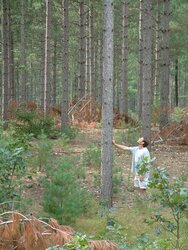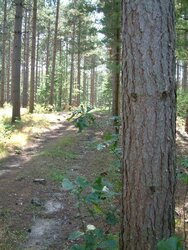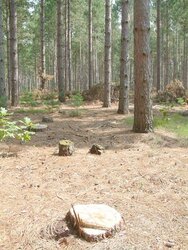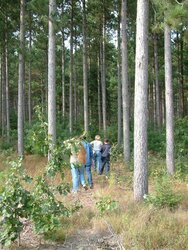I've burned wood for some years as a supplement to oil, but now am aiming to make wood the main heat source, via a gasification boiler (Econoburn) + thermal storage.
I have access to wood that I can cut for free on my folks' property (across the road from me). While there is a fair amount of mixed hardwood, there is an even greater (much greater!) abundance of red pine that was planted as a plantation in a former pasture during the 1950s, and never properly thinned, so now a lot of them are tall and gradually crowding each other out. Along with its abundance, it also happens to be closer to my house than the hardwood.
From what I've been able to find out, red pine also seems to have a relatively low moisture content, and it seems would be quick-seasoning
see (lists "norway pine" which is another name for red pine)
http://mb-soft.com/juca/print/firewood.html
(second table lists moisture contents with % above the 20% desired moisture)
I know that hardwoods have more btus per cord than softwoods- but then again, this is free, which helps. And I know that burning softwoods in a slow fire is a recipe for creosote and chimney fires- but a gasifier run full throttle into storage would seem to avoid the problems associated with creosote.
Anyone have any reaction as to whether red pine will work OK in a gasifier?
Thanks
I have access to wood that I can cut for free on my folks' property (across the road from me). While there is a fair amount of mixed hardwood, there is an even greater (much greater!) abundance of red pine that was planted as a plantation in a former pasture during the 1950s, and never properly thinned, so now a lot of them are tall and gradually crowding each other out. Along with its abundance, it also happens to be closer to my house than the hardwood.
From what I've been able to find out, red pine also seems to have a relatively low moisture content, and it seems would be quick-seasoning
see (lists "norway pine" which is another name for red pine)
http://mb-soft.com/juca/print/firewood.html
(second table lists moisture contents with % above the 20% desired moisture)
I know that hardwoods have more btus per cord than softwoods- but then again, this is free, which helps. And I know that burning softwoods in a slow fire is a recipe for creosote and chimney fires- but a gasifier run full throttle into storage would seem to avoid the problems associated with creosote.
Anyone have any reaction as to whether red pine will work OK in a gasifier?
Thanks





